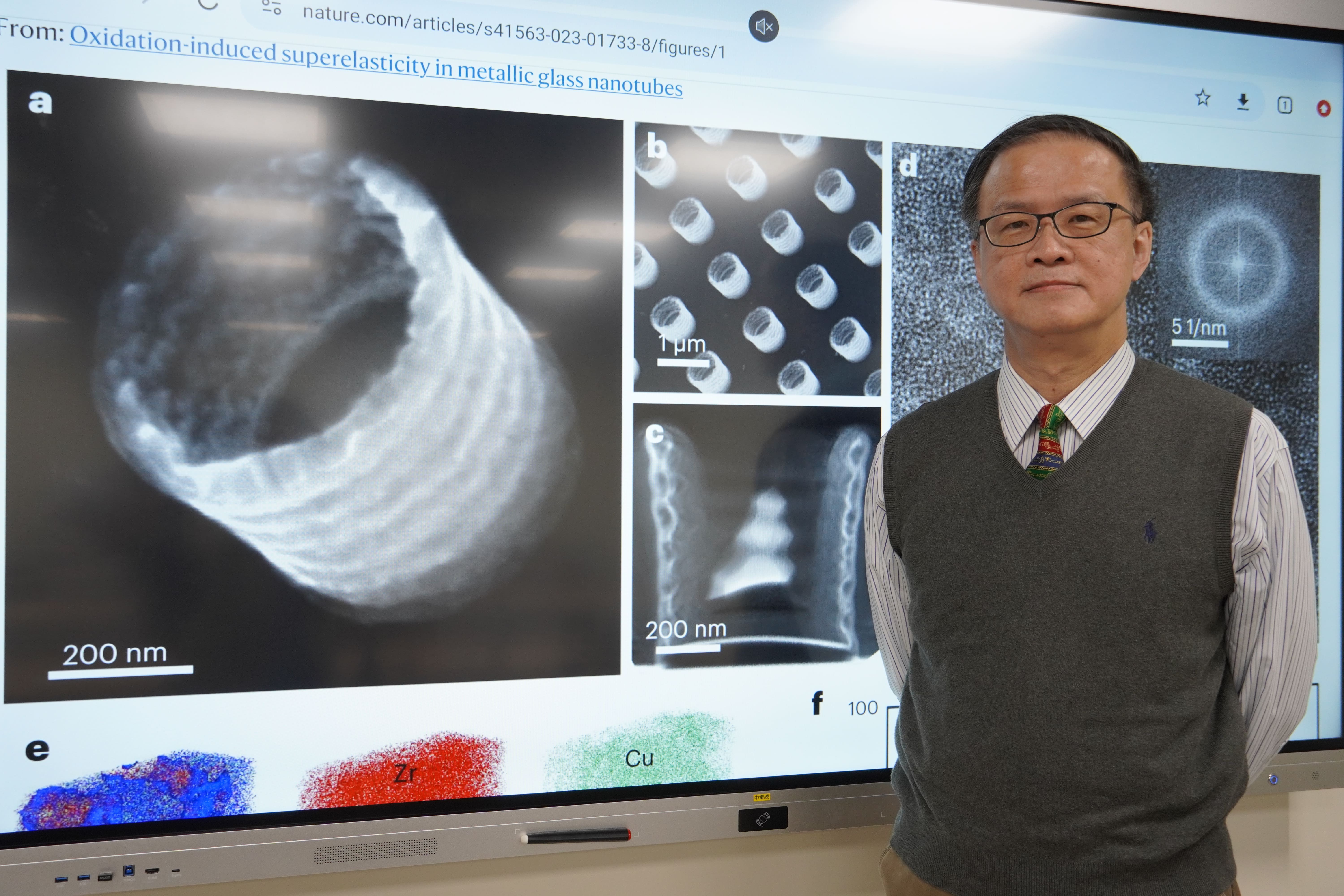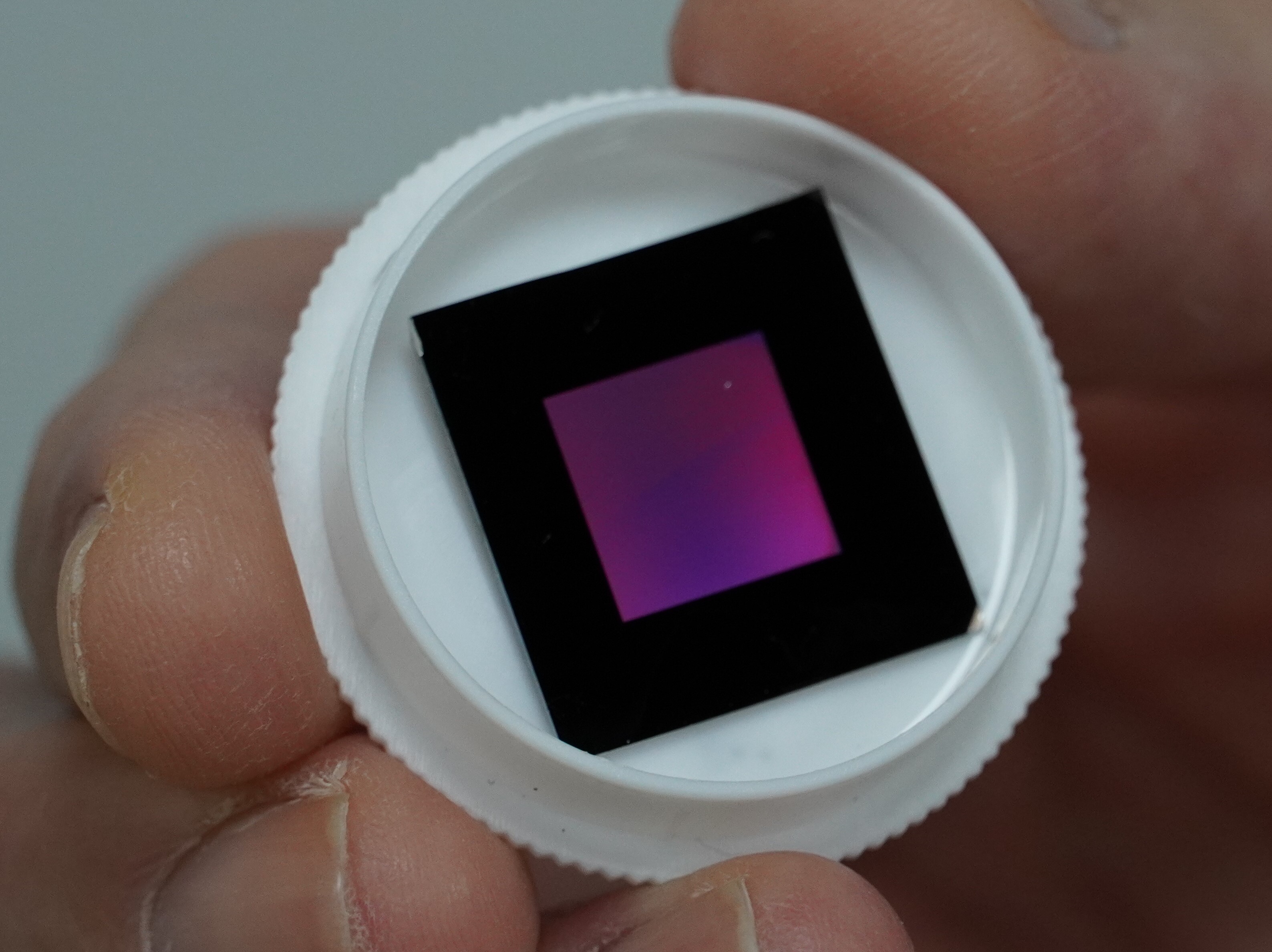Resilient Nanotubes: Taiwan Tech and City University of Hong Kong Research Featured in Top Journals
In recent years, nanotechnology has seen innovative breakthroughs in both size and materials. Professor Jinn P. Chu’s team from the Department of Materials Science at Taiwan Tech won the American Chemical Society Award for developing metallic glass nanotubes in 2018, in collaboration with Professor Yang Yong's team from the City University of Hong Kong for in-depth analysis. They discovered that oxidized metallic glass nanotubes have an elasticity of up to 14%, even surpassing that of most superelastic metals. In the future, these nanodevices could be applied in harsh environments, such as sensors, precision medical equipment, biochips, driving components, and nanorobots, opening new directions in the field of technology. This research achievement has been published in the top international journal Nature Materials.

Professor Jinn P. Chu's team collaborated with Professor Yang Yong's team from the City University of Hong Kong and discovered that oxidized metallic glass nanotubes exhibit an elasticity of up to 14%.
The production of metallic glass nanotubes presents certain challenges. Typically, the wall thickness of metallic glass nanotubes is 100 nanometers. To facilitate testing the degree of oxidation, Professor Jinn P. Chu's team intentionally produced metallic glass nanotubes with a thickness of only 20 nanometers. Additionally, they utilized other materials to create chips of various nanoscale dimensions, providing the research team from Hong Kong with more diverse options for their research.
Professor Jinn P. Chu explained that ordinary metals usually only exhibit 1-2% elastic strain. However, at the nanoscale, metallic materials can oxidize when exposed to oxygen in the air in daily room-temperature environments, leading to a decrease or loss of functionality. This has long been a challenging problem for scientists. Surprisingly, the oxidized metallic glass nanotubes demonstrated outstanding resilience and deformation recovery capabilities. They exhibited higher resistance to external forces and improved durability. The research results left both the Hong Kong and Taiwan research teams amazed.

Under an electron microscope, the height difference of the metal nanotubes before and after micro-compression is approximately 60 nanometers.
Professor Jinn P. Chu, who has studied metallic glass materials for more than 20 years, pointed out that current research on metallic glass nanotubes is mostly used in biomedical fields such as detection instruments and biological chips. With the discovery of this elastic strain, the tentacles can also be extended to the fields of green energy and chemical industry. Currently, cross-unit cooperation is carried out to apply metallic glass materials in different fields to expand the scope and orientation of use. In the future, more research related to metallic glass nanomaterials will be published.
Metallic glass nanotubes are manufactured through a simple and mature semiconductor process combined with sputtering technology, enabling the production of large-area arrays of metallic nanotubes with high application value. Not only is it not limited by metal types and materials, but it can also be combined with other nanomaterials, such as zinc oxide, iron oxide, and graphene, giving it extremely strong application flexibility. This metal nanotube array won the American Chemical Society (ACS) Award at the 2018 Japan Nanotechnology International Exhibition.
The cooperation between Professor Jinn P. Chu’s team at Taiwan Tech and Professor Yang Yong’s team at the City University of Hong Kong not only theoretically analyzes the superelasticity of metallic nanotubes, but also brings new possibilities for the application of nanomaterials, injecting fresh vitality into international academic cooperation and exchanges.

Taiwan Tech team used semiconductor manufacturing processes and sputtering technology to produce more than 25 million metallic glass nanotubes on a small wafer, as shown in the brightly colored areas in the photo.




